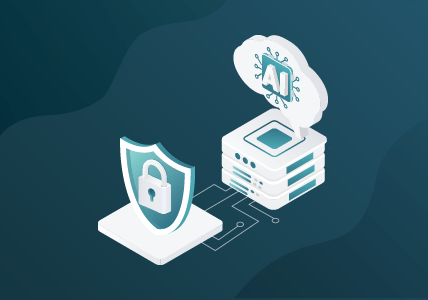Definitive Guide to Hybrid Clouds, Chapter 2: Exploring the Roles of NetOps, CloudOps, and SecOps
Editor’s note: This post explores Chapter 2 of the “Definitive Guide™ to Network Visibility and Analytics in the Hybrid Cloud.” Read Chapter 1 and check back for future posts covering Chapters 3–7.
As more organizations move forward with their cloud transformations, traditional IT network operations (NetOps) and security operations (SecOps) roles are evolving.
In this post, we take a sneak peek at how NetOps and SecOps roles are shifting in the new cloud-first future.
NetOps Professionals Must Adapt Their Cloud Network Skills
NetOps teams are — and will continue to be — responsible for building network infrastructure that is highly available, responsive, and capable of supporting high levels of traffic.
But they’ll need to adjust to a cloud architecture that could be significantly different than what they are used to in an on-premises environment. Additionally, implementation of major networking functions and controls, such as routing, load balancing, network traffic monitoring, and network segmentation/isolation, is very different than traditional on-premises networks or those abstracted away into a service.
To manage the transition to cloud — and succeed going forward — NetOps teams will need to adapt their technologies, understandings, and processes to accommodate a hybrid architecture.
Learn the cloud network skills and functions NetOps teams need to thrive in the new norm by reading Chapter 2.
SecOps Must Adapt Their Tools and Processes for Cloud Environments
As organizations transition to the cloud, this creates more opportunities for cybercriminals. SecOps teams will be vital for threat monitoring and prevention as well as threat identification, event analysis, and incident response in an increasingly complex hybrid environment.
Designing a SecOps program for the cloud involves important functional requirements, including:
- Powerful performance-tuning controls
- Integration across other public cloud and on-premises infrastructures
- Integration with cloud provider APIs and automation and orchestration controls
For the rest of the list — and to learn why these functions are important — read Chapter 2.
Both Teams Will Need to Adopt a Cloud-First Approach to Architecture
Both security and network operations teams will need to invest in scalable centralized solutions as organizations make use of multiple cloud services and enable various types of cloud workloads and infrastructure capabilities.

Moving to the cloud will require new architectures, understandings, operational controls, and platforms, including:
- Building in security at every layer
- Designing for failure scenarios and elasticity
- Moving to software-defined infrastructure
- Building a sustainable cloud fabric
For the complete list, and to ensure your NetOps and SecOps are prepared to manage your transition to the cloud, read Chapter 2 of the “Definitive Guide™ to Network Visibility and Analytics in the Hybrid Cloud.”
Featured Webinars
Hear from our experts on the latest trends and best practices to optimize your network visibility and analysis.

CONTINUE THE DISCUSSION
People are talking about this in the Gigamon Community’s Hybrid/Public Cloud group.
Share your thoughts today









